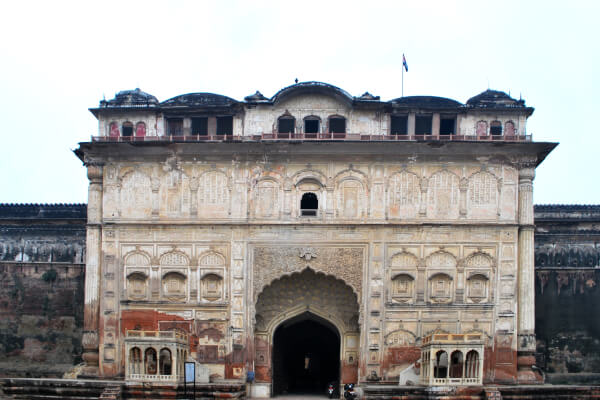Quila Mubarak: A Storied Legacy of Patiala’s Royal Heritage
Patiala, a city steeped in the legacies of emperors, resplendent gardens, and opulent palaces, stands as a testament to a bygone era. At the heart of this vibrant city lies the Quila Mubarak, a treasured National Monument, and the oldest enclave of Patiala’s heritage. Maharaja Ala Singh, in the year 1764, first conceived this architectural marvel.

From Mud Fort to Majestic Palace: Initially, the Quila Mubarak started as a modest kuch-garhi, part of a mud fort. However, time saw it transformed into a resplendent edifice of baked bricks, resounding with grandeur. The fort’s restoration gave rise to a sprawling two-story mansion, graced with an imposing entrance adorned with intricate arches. The inner palace, a labor of love undertaken by Maharaja Amar Singh (1765-1781 AD), stands as a testament to the craftsmanship of that era.
A Royal Residence through Ages: Through the annals of history, Quila Mubarak bore witness to the reigns of Maharaja Sahib Singh (1781- 1813 AD), Maharaja Karam Singh (1813 AD – 1845 AD), and Maharaja Narinder Singh (1845 AD to 1862). Their presence imbued the fort with the echoes of royal footsteps and the whispers of bygone conversations.
Exploring the Complex: Nestled in a sprawling 10-acre expanse at the heart of the city, the Quila Mubarak Complex encompasses several architectural wonders. From the Ran Basa to the Quila Androon, the Darbar Hall to the Sard Khana, each structure carries within it a piece of history waiting to be uncovered.
The Gateway to Splendor
The Quila Mubarak Gateway, fashioned from red sandstone, stands as the sole portal to the Quila Mubarak Complex, ushering visitors into the heart of its regal beauty. With multiple domes adorning its exterior, it exudes an aura of magnificence. The Androon Gateway, nestled within the inner boundary of Quila Androon Chowk, stands as a testament to the intricate artistry of its construction.
Legacy and Modern Relevance
Over the years, the Quila Mubarak has seen transformations in purpose and use. Today, it stands at a crossroads, where its cultural significance resonates through its form and utilization of space. Though its meaning may have shifted for some, the Quila Mubarak continues to hold a special place in the hearts of those who appreciate its historical grandeur.
The Intricate Details
Within the Quila, multiple courtyards beckon, each akin to a palace in its own right. Three axis points grace every courtyard – central, eastern, and western. The west courts exude a sense of private residential charm, while the east axis zone invites the public, setting the stage for music and art. The passage between central and east axis cradles the jyot, a sacred flame kindled at Jwalamukhi and safeguarded by Baba Ala Singh, the city’s founding father.
A Tapestry of Purpose
Rooms within Quila Androon echo with purpose. The Rang Mahal, adorned with elaborate paintings, serves as a majestic chamber for royal audiences. Meanwhile, Quila Androon itself stands as a public court, a testament to the inclusive nature of the complex. Each nook and cranny tells a story, weaving together the intricate tapestry of Patiala’s storied past.
